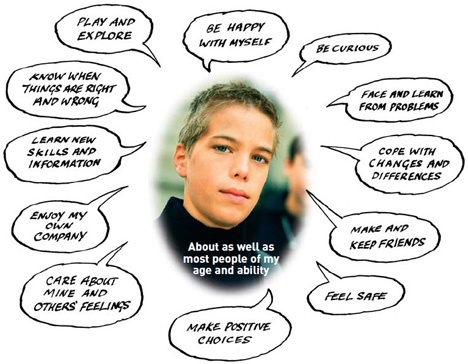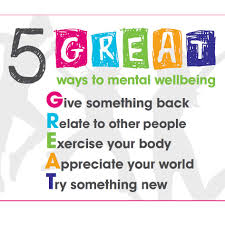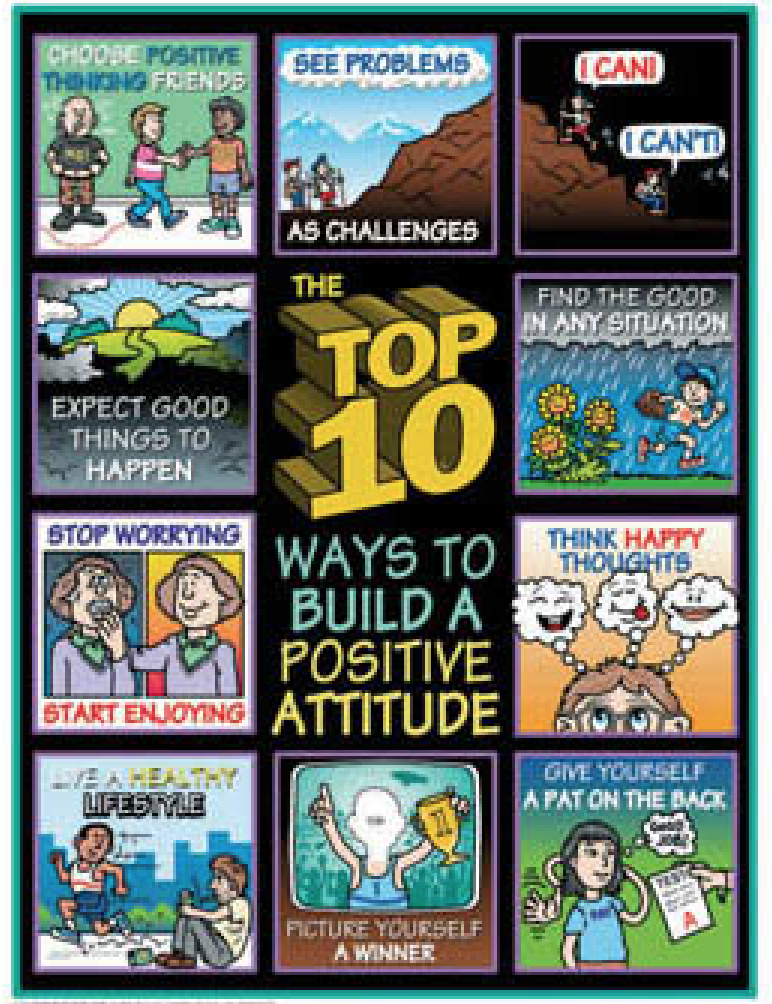
Student well-being is an increasing concern for home and school. Many children and youth experience bouts of anxiety, stress, and isolation at some point over the course of their educational careers. Families and schools that make well-being a priority emphasize strong relationships, positive communication, risk-taking, self-confidence, and management of physical health and emotions. This can seem like a daunting task, but with a systematic plan that emphasizes what we already do, families and schools can work together in an ongoing and seamless manner.
A Note to School
Today, my child didn’t want to go to school. He said that he felt like he didn’t belong, and that he didn’t have any friends. We watched Sesame Street’s Good Birds’ Club where Big Bird was being bullied into changing who he was just to fit in. We discussed what we like about ourselves and that we should be happy to be ourselves. I wonder how to talk to him, make him feel valued, and help him to feel that he belongs.
a mindful parent
Families need to know that their children are progressing well in terms of intellectual and social-emotional learning. The intellectual side of learning is often taken care of by the curriculum – both that which is stated and that which is not. Schools host curriculum nights, such as math and literacy, in order to respond to needs identified by parents. The curriculum is clear in terms of what children and youth need to know.
But… the social-emotional is a little trickier. Without any intent, children often develop a sense of isolation in the school system – they make a poor decision, they are not chosen to be in a particular group, or they don’t do as well as their best buddies do. It is alarming for families to hear that their child doesn’t want to go to school or doesn’t feel like he belongs, or even more heart-breaking, that she doesn’t have any friends.
- What is well-being, and how can schools and families work together to enhance and promote it?
- What does well-being look and sound like in the classroom, on the schoolyard, in the school community, and at home?

Ontario’s renewed vision for education cites promoting student well-being as a primary goal, indicating that all children and students will also develop enhanced mental and physical health, a positive sense of self and belonging, and the skills to make positive choices.
Well-being depends on a complex interaction between family and school where parent knowledge and wisdom are carefully considered within the context of school. Families know their children, best and what might be perceived at school as bravado, helplessness, silliness, or lack of care on a child’s part may be masking a deeper feeling of hurt, insecurity, and isolation. Well-being or positive mental health (as defined by the Public Health Association of Canada) is “the capacity of each and all of us to feel, think, and act in ways that enhance our ability to enjoy life and deal with the challenges we face. It is a positive sense of emotional and spiritual well-being that respects the importance of culture, equity, social justice, interconnections, and personal dignity.” At its best, it is characterized by resilience, commitment to an active lifestyle, and the experience of flourishing (Carney & Parr (2015): Resilient, Active, and Flourishing: Supporting Positive Mental Health and Well-Being in School Communities. ).
First and foremost, recognize that everybody, everywhere, is a teacher of well-being. This can be accomplished by sharing inspirational poems and songs such as Children Learn What They Live by Dorothy Law Nolte, Teach Your Children Well by Crosby, Stills, and Nash, or Flowers are Red by Harry Chapin.
Post key messages and posters in prominent areas of the school. Use the messages each day in the classroom so that they become part of children’s meta-talk. Send home reminder postcards with children. I think I can, I think I can, I think I can… I knew I could!
Share resources that enhance thinking about well-being – what it is and what it is not. Have a family section in the library (or in the front entry way of the school) that makes reference texts available to families wishing to explore well-being. While this is not a comprehensive list, it is a starting point for schools and families interested in exploring simple, easy to manage strategies that enhance understanding about the well-being of children, youth, families, and schools.
- Well-Aware: Developing Resilient, Active and Flourishing Students, Patrick Carney, Pearson, 2015. Hot off the presses, Carney presents a school, class, family, and community approach to well-being. He asks us to reconsider some of what might have once been viewed as negative as gift… for example, the gift of energy or excitement.
- The Conscious Parent: Transforming Ourselves, Empowering Our Children, Shefali Tsabary, Namaste, 2010 details the power of learning alongside children in mutual and reciprocal partnership.
- 10 Ways to Promote Good Mental Health and Well-Being in Kids outlines well-being as a set of choices made by families – for many it will be reinforcement of their way of being; for others, it will provide important insights.
- 10 Mindful Minutes, Goldie Hawn, Rutledge, 2011 offers simple, effective ways for families to create calmer, kinder, and happier environments that reduce stress and anxiety.
- Mindful Teaching and Teaching Mindfulness: A Guide for Anyone Who Teaches Anything, Deborah Schoeberlein with Suki Sheth, Wisdom, 2009 presents an approach that nurtures emotional balance, reflective thinking, and empathic relationships.
- Planting Seeds: Practicing Mindfulness with Children, Thict Nhat Hank and the Plum Village Community, Parallax Press, 2011 outlines a range of hands-on activities to increase concentration and confidence, relieve stress, communicate effectively, and address difficult emotions.
- Quiet: The Power of Introverts in a World that Can’t Stop Talking, Susan Cain, Broadway Books, 2013 discusses how we see introverts, how they see themselves, and the stories of many successful introverts.
Engage families in collaborative exploration of positive mental health and well being.
- Have a corner of the newsletter that highlights one or two easy to implement strategies that enhance well-being at home and at school.
- Invite families to sit in on mindful meditations or yoga moments at school to see how it all works.
- Suggest quiet and calming music that might accompany more stressful moments of homework or studying.
- Use the texts listed below (literature to TedTalk) to highlight one key message a week (at times, this might be supplemented with kits or sets of questions, sentence starters, props, response tasks, etc., each of which supports the work of the classroom). For example, In response to Scaredy Squirrel, what do we have in our family emergency kit? What do we wonder about? What do we like about ourselves as individuals, as families? Has there ever been a time when you felt like you didn’t fit in or belong? Have you ever felt like the character or person in the text? Remember, if we want them to talk, we must give them something to talk about.
 In the earlier years, use picture books to foster family conversations about well-being and real-life situations that might be tricky to discuss. Concepts that underpin well-being can be explored with the use of children’s literature and texts that are readily available (e.g., video, movie, multimedia, resource). Children, youth, schools, and families can explore the concepts and relate to characters or real people in the media in ways that might pose difficulty in real life. Sample texts include, but are certainly not limited to:
In the earlier years, use picture books to foster family conversations about well-being and real-life situations that might be tricky to discuss. Concepts that underpin well-being can be explored with the use of children’s literature and texts that are readily available (e.g., video, movie, multimedia, resource). Children, youth, schools, and families can explore the concepts and relate to characters or real people in the media in ways that might pose difficulty in real life. Sample texts include, but are certainly not limited to:
- Scaredy Squirrel, Melanie Watt, Kids Can Press focusses on risk-taking and how we need to take small steps in order to build confidence and willingness to take risks. Children can identify things that scare them, what they might put in their emergency kits, their own daily routines, and feelings associated with taking a risk or trying something unfamiliar. See suggestions for reading aloud at Kids Can Press.
- The Most Magnificent Thing, Ashley Spires, Kids Can Press, 2014 shows a young girl who tries not once, not twice, but many times to build the most magnificent thing. Reminiscent of Edison who said, “I have not failed, I have just found 1000 ways that won’t work,” what she finds in the end is that each thing that she has built along the way contirbutes to her most magnificent thing. See a multi-lesson learning experience at Scholastic.
- I Like Myself, Karen Beaumont, Scholastic, 2010 and What I Like About Me, Allia Zobel-Nolan, 2005, Readers Digest support students in building self-confidence, understanding that difference makes us special, and identifying what it is they like about themsleves. We all have strengths, and sometimes we just need a little help to discover and articulate them.
- The Way I Feel, Janan Cain, Scholastic, 2000 and Feelings, Aliki, Greenwillow, 1986 allow children to make connections between their daily experiences and feelings, Discussion questions include: What are some feelings you remember having? What were you doing when you had that feeling? Talk about a time when you felt happy, sad, excited, angry, etc. What are the best ways to express these feelings? Ultimately, the goal of such discussions is to share the message that we all have similar feeling and are really not that different at all; what might differ is how we express our feelings. Check out this full week plan for Grades 3-5.
- I Wonder, Annaka Harris, Four Elephants Press, 2013, frees children and adults to be curious, uncertain, and okay with the many things we don’t know. It would serve as a wonderful springboard to conversations about what we wonder about and what we don’t know.
- Ripple’s Effect, Shawn Achor and Amy Blankson, Little Pickle Press, 2012 shares the message that being happy in this world is a choice we make. It demonstrates the difference that just one individual can make by being positive. You can find the publisher’s lesson plans at Little Pickle Press.
- What Do You Do With An Idea? Kobi Yamada, Compendium, 2014 and Wings of Change, Franklin Hill, Hushion House, 2001 foster open conversation about persistence, resilience, belief in oneself, and openness to small successes.
- Through the Cracks, Carolyn Solomon, Davis, 1994 demonstrates that we all learn in different ways and we just need to find our strengths. When our strengths are matched with learning experiences, we all flourish. Discussion can focus on asking students (of all ages) to review the images presented, pointing out the ways that they learn best.
- The Invisible Boy, Trudy Ludwig, Knopf Books for Young Readers, 2013 presents the story of a young boy who struggles with belonging. Discussion questions include: How are we similar? How are we different? How can we make sure that everyone feels included and welcome. See this sample read aloud plan.
With youth, use biographies, movies, and TedTalks to foster conversations. While picture books are still valuable discussion starters, there are times when more complex texts and messages are warranted. Ted Talks respond to the new literacies of students, as do any popular culture movies, and open conversations about persistence, values, risk-taking, self-confidence. etc. Favourites include the following:
 Biographies and messages of famous people (e.g., Thomas Edison – I’ve not failed, I’ve just found 1000 ways that don’t work; Michael J. Fox – You suffer the blow, but you capitalize on every opportunity left in its wake) allow youth to explore the similarities of their lives to those who have made a difference.
Biographies and messages of famous people (e.g., Thomas Edison – I’ve not failed, I’ve just found 1000 ways that don’t work; Michael J. Fox – You suffer the blow, but you capitalize on every opportunity left in its wake) allow youth to explore the similarities of their lives to those who have made a difference.- Popular Culture Movies, such as Freedom Writers, Mona Lisa Smile, Dangerous Minds, Dead Poets Society, all contain messages of resilience and identity.
- Ted Talks: On Being Wrong; Meaghan Ramsey’s Why thinking you’re ugly is bad for you; Shane Koyczan’s To This Day … for the bullied and beautiful; Susan Cain’s The Power of Introverts)
How do you work toward the goal of well-being with schools and families? Which of these ideas/books/strategies have you tried? What other resources can you add?

